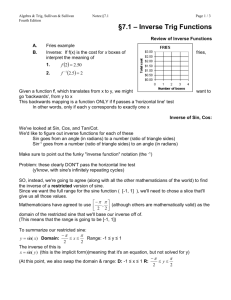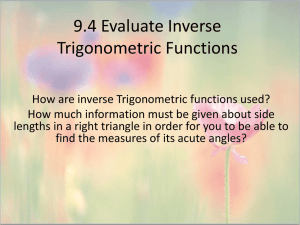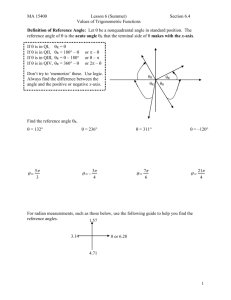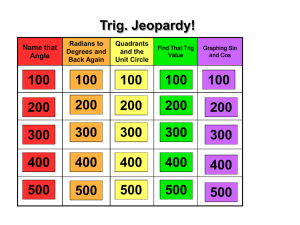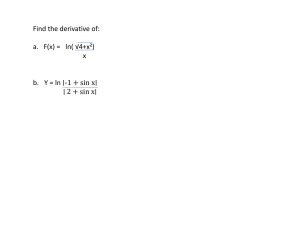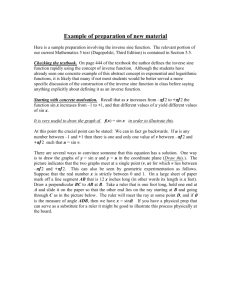02-28 Section 7-1 Inverse Sine, Cosine, Tangent
advertisement
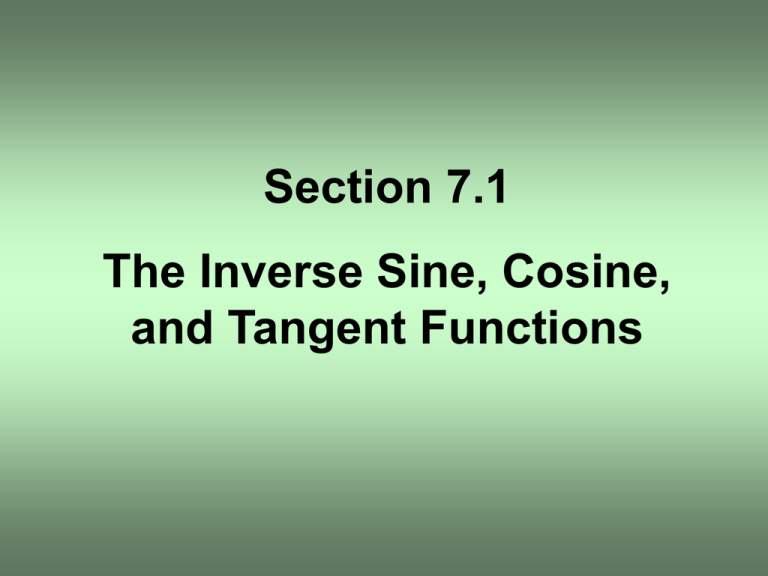
Section 7.1 The Inverse Sine, Cosine, and Tangent Functions Use of Inverses Inverse functions are foundational for solving equations. You use inverse functions to move expressions from one side of the equation to the other. 3x 2 7 82 3x 2 82 7 3x 2 75 75 x2 3 The inverse of “adding 7” is “subtracting 7” The inverse of “multiplying by 3” is “dividing by 3” x 2 25 x 25 The inverse of “squaring” is “square rooting…” …except that the squaring function really doesn’t have an inverse, so we find a way to use the square root function to give us all the solutions. y x2 Horizontal line test: It fails. This function has no inverse. Restricted domain [0, ) The blue function has an inverse. This inverse function is f 1 ( x) x Review of Properties of Functions and Their Inverses y = sin x Horizontal line test: It fails. This function has no inverse. Restrict the Domain Domain Range Find the angle θ so that sin θ = 1. On the unit circle, where (in quadrants 4 and 1) is y equal to 1? Find the angle θ so that sin θ = -1/2. On the unit circle, where (in quadrants 4 and 1) is y equal to -1/2 ? –1/2 sin(sin1 x) x whenever you can compute the inverse sine. sin 1 gives you either a positive angle in Q1 or a negative angle in Q4. 1 This means that sin (sin x) x only for positive angle in Q1 or a negative angle in Q4. Any other angles will give a Q1 or Q4 angle with the same sine. The angle is a positive angle in Q1. = π/8. = 0.5 undefined Find the angle θ so that cos θ = 0. 2 Find the angle θ so that cos 2 The function cos–1 gives an angle in Q1 or Q2. (a) 12 2 (c ) 3 (b) 0.4 (d ) undefined y tan 1 x y tan 1 x The function tan–1 gives the same kinds of angles as sin–1 does. x 1 f ( x) sin 2 1 1 Domain of f: all real numbers (misleading, because this f has no inverse!) Domain of f –1: [–3, 1]


